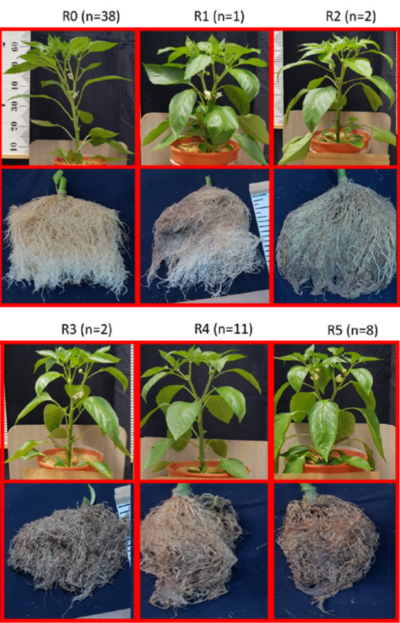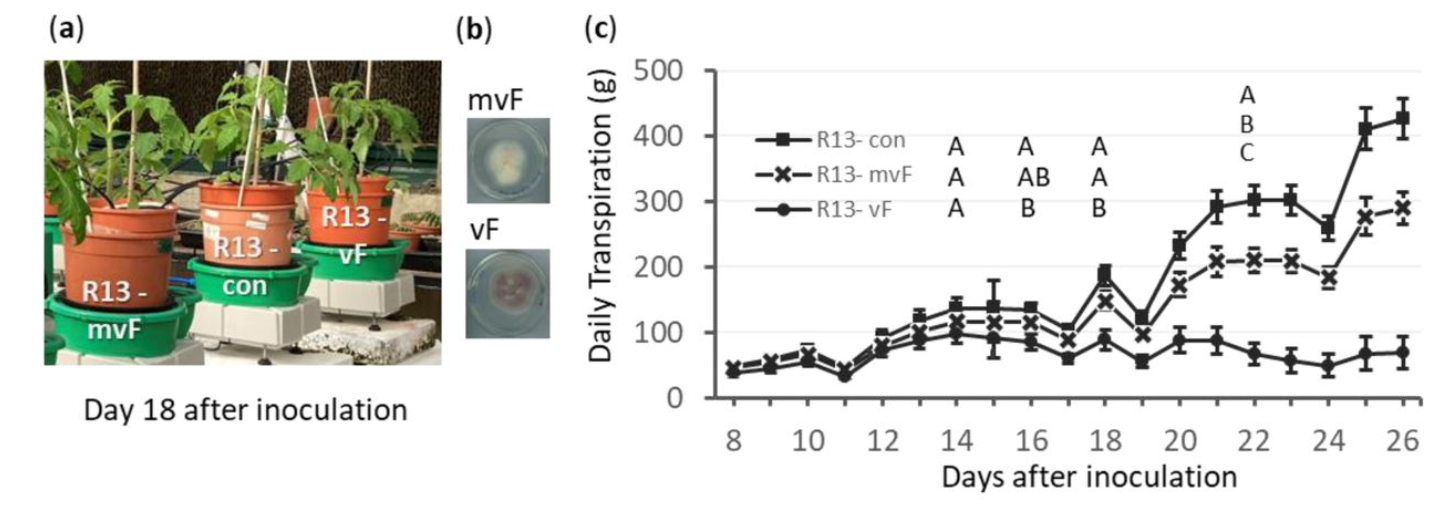Home » Applications » Biotic stress
Biotic stress in plants
The connection between Biotic Stress and Plant Water Relations
Biotic stress directly impacts plant health and significantly alters plant water relations. Early symptoms often show physiological changes, especially in stomatal behavior, before visible damage appears. Pathogens and pests disrupt stomatal regulation, affecting transpiration and water balance, either causing excessive water loss or reducing water uptake efficiency.

Increased Transpiration
The fungus Fusicoccum amygdali (now commonly referred to as Phomopsis amygdali) is a pathogen that affects almond and peach trees. It produces a phytotoxin known as fusicoccin, named after the fungus itself.
Fusicoccin leads to an influx of potassium ions and water into the guard cells, causing them to swell and the stomata to open widely. The excessive opening of stomata results in a significant increase in transpiration rates at a very early stage of the infection.
Reduced Transpiration
Soil-borne fungi such as Fusarium oxysporum and Verticillium dahliae infect plants through the roots and colonize the xylem vessels, producing mycelium, polysaccharides, and toxins that block water flow. This disruption impairs the transport of water and nutrients from roots to leaves, causing reduced transpiration, wilting, chlorosis, and impaired photosynthesis.
The compromised hydraulic system not only affects water balance but also increases the plant’s susceptibility to pathogens and reduces its tolerance to environmental stresses like heat and drought.
Delayed Water Stress Response
Tomato Yellow Leaf Curl Virus (TYLCV), transmitted by whiteflies (Bemisia tabaci), causes leaf curling, yellowing, and stunted growth in tomato plants.
It also disrupts water regulation, delaying stomatal closure during drought, leading to excessive water loss, reduced turgor, impaired nutrient transport, and diminished drought resilience.
Altered Water Uptake
Nematodes such as root-knot (Meloidogyne spp.) and cyst nematodes (Heterodera spp.) attack plant roots, forming galls or syncytia that disrupt root function. This damage reduces water and nutrient uptake, causing symptoms like wilting and stunted growth, even in moist soil. The weakened root system also becomes more susceptible to secondary infections and abiotic stresses like drought or nutrient deficiencies.
Key benefits of using PlantArray for your biotic experiments:
- An advanced technology that performs high-throughput dynamic analysis and is tailored for early detection of biotic stress scenarios.
- Monitors key physiological traits such as transpiration—the fastest parameter to change—stomatal conductance, biomass gain, and root activity.
- Evaluates plant responses to fungi, bacteria, viruses, nematodes, and insect pests.
- Real-time monitoring of physiological responses to better understand plant-environment interactions.
- Delivers actionable results within 4–6 weeks.
Fungi virulence

Variations in transpiration mirrored virulence levels before visible disease symptoms.
Rehovot-13 (R13) plants infected with mvF (Fusarium oxysporum, common strain) or vF (Fusarium oxysporum,
virulent strain) were compared to mock-infected controls.
(a) Day 18: plants in the PlantArray system.
(b) At the experiment’s end, the stem pieces incubated showed fungal outgrowth—pink for mvF, and violet for vF. Infected plants displayed stem browning and fungal growth, unlike controls.
(c) Daily transpiration of the whole plants (mean ± SE), different letters indicate a significant difference between treatments
Fridman et al. (2024).

